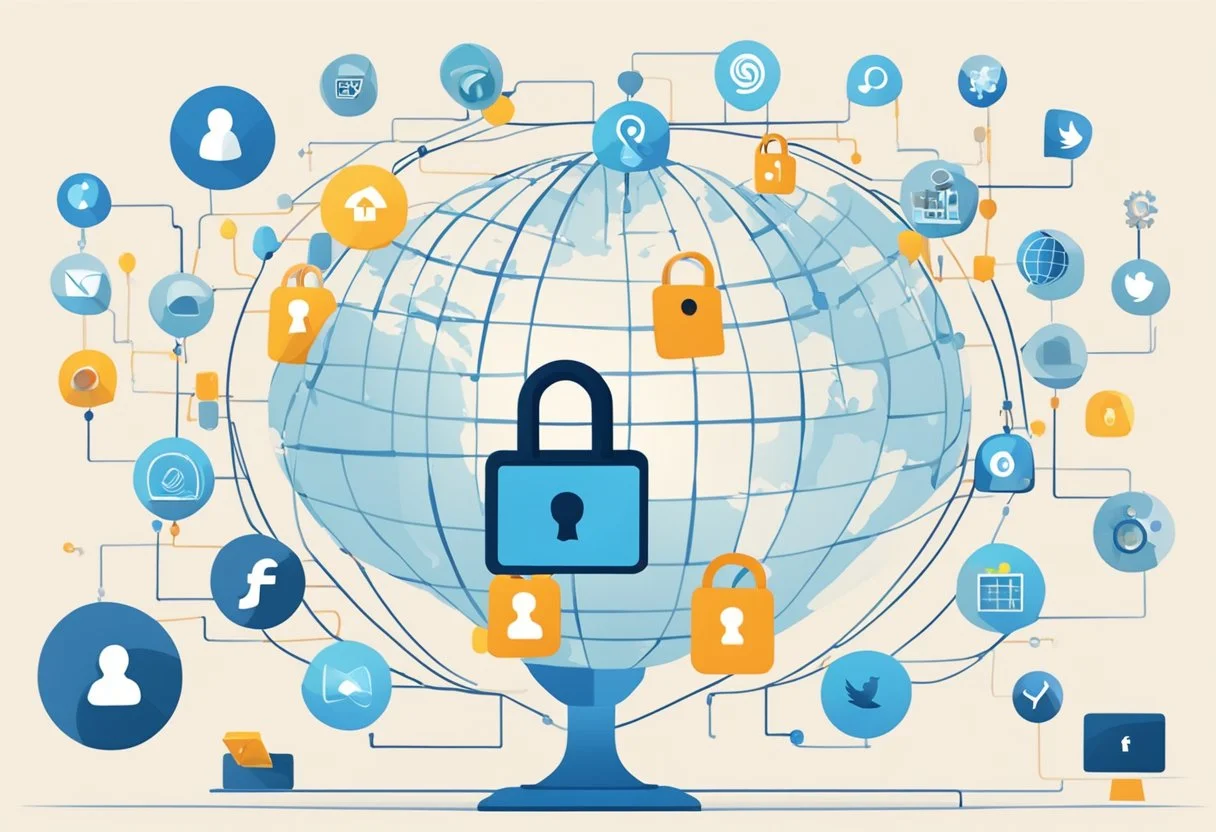Social media marketing has become an integral part of any business strategy, and with each passing year, new social media marketing trends emerge that shape the way marketers approach social media platforms. As we approach 2025, it’s important to take a look at the trends that are expected to dominate the social media landscape in the coming years. From the rise of short-form video content to the evolution of influencer marketing, there are a number of trends that marketers should be aware of in order to stay ahead of the curve.
One of the biggest trends in social media marketing is the rise of short-form video content. Platforms like TikTok and Instagram Reels have exploded in popularity in recent years, and it’s clear that consumers are increasingly drawn to bite-sized, visually engaging content. As a result, marketers are likely to focus more on creating short-form video content that is designed to capture consumers’ attention quickly and leave a lasting impression.
Another trend that is expected to continue evolving in 2025 is influencer marketing. As consumers become more savvy and discerning, it’s becoming increasingly important for brands to work with influencers who are seen as authentic and trustworthy. This means that marketers will need to focus more on building long-term relationships with influencers who are aligned with their brand values and are able to authentically promote their products or services.
Key Takeaways
- Short-form video content is expected to dominate social media marketing in 2025.
- Influencer marketing will continue to evolve, with a greater emphasis on authenticity and long-term relationships.
- Social commerce, AI and personalization, and augmented reality experiences are also expected to play a significant role in social media marketing in the coming years.
The Rise of Short-Form Video Content

One of the main reasons for the rise of short-form video content is its ability to engage with younger audiences. According to a recent study, 60% of Gen Z consumers prefer short-form videos over longer content. This is because short-form videos are easy to consume and provide a quick burst of entertainment.
Another reason for the popularity of short-form video content is its ability to go viral. Short-form videos are easily shareable and can quickly gain traction on social media platforms. This makes them a powerful tool for marketers looking to increase brand awareness and reach a wider audience.
However, it’s important to note that short-form video content isn’t suitable for every brand or marketing campaign. It’s important to consider the message you want to convey and whether or not it can be effectively communicated in a short amount of time. Additionally, it’s important to ensure that the content is of high quality and aligns with your brand’s values.
In conclusion, the rise of short-form video content is a trend that is expected to continue in 2025. It’s a powerful tool for engaging with younger audiences and can be a great way to increase brand awareness. However, it’s important to consider whether or not it’s the right fit for your brand and marketing campaign.
Influencer Marketing Evolution
Influencer marketing has been a major trend in social media marketing for the past few years, and it’s expected to continue evolving in 2025. Here are some of the key ways that influencer marketing is likely to change in the coming year.
Micro-Influencer Impact
One of the biggest trends in influencer marketing is the rise of micro-influencers. These are influencers with smaller followings, typically in the range of 1,000 to 100,000 followers. While they may not have the massive reach of macro-influencers, micro-influencers often have highly engaged audiences who are more likely to trust their recommendations.
In 2025, micro-influencers will likely continue to grow in importance as brands recognize the potential of these niche influencers in reaching specific markets and driving targeted engagement. Brands may also work with a larger number of micro-influencers rather than relying on a few big names, in order to diversify their influencer partnerships and reach a wider range of consumers.
Authenticity in Partnerships
Another trend in influencer marketing is the focus on authenticity and transparency in partnerships. In 2025, brands are expected to place even greater emphasis on working with influencers who are a good fit for their brand values and who can create content that feels genuine and authentic.
This may mean that brands are more selective in the influencers they partner with, choosing those who have a strong personal brand and a clear affinity for the brand’s products or services. It may also mean that influencers are more transparent about their partnerships and disclose their sponsored content more clearly to their followers.
Overall, the evolution of influencer marketing in 2025 is likely to be driven by a focus on targeted engagement, authenticity, and transparency. Brands that can work with micro-influencers to create genuine partnerships are likely to see the most success in this rapidly evolving landscape.
Social Commerce Advancements
Social commerce is the fusion of social media and e-commerce. In 2025, social commerce is expected to grow exponentially, allowing businesses to sell their products and services directly to their social media audience without redirecting them to external websites. This integration will provide a seamless shopping experience for consumers, making it easier for them to purchase products they discover on social media platforms.
Shoppable Posts
Shoppable posts are a feature that allows businesses to tag their products in their social media posts. Users can click on the tagged item and be directed to the product page, where they can purchase the product. This feature is already available on Instagram and Facebook, and is expected to become more prevalent on other platforms such as TikTok and Pinterest in 2025.
Live Shopping Features
Live shopping is a relatively new concept in social commerce. It allows businesses to host live streams where they showcase their products and interact with their audience in real time. During the live stream, users can purchase products directly from the stream, making the shopping experience more interactive and engaging. This feature is currently available on platforms such as Facebook, Instagram, and TikTok, and is expected to become more popular in 2025.
In conclusion, social commerce is advancing rapidly, and businesses that want to remain competitive in 2025 should consider integrating social commerce into their marketing strategies. By utilizing shoppable posts and live shopping features, businesses can provide a seamless shopping experience for their customers, ultimately leading to increased sales and revenue.
AI and Personalization

Chatbots and Customer Service
Chatbots are an excellent example of how AI is transforming customer service. They can provide real-time, personalized interactions with customers and respond to inquiries round-the-clock. In 2025, chatbots are expected to become more sophisticated and refined, providing more natural language processing and better customer engagement.
Predictive Analytics
Predictive analytics is another area where AI is making a significant impact. It enables businesses to analyze customer data and predict their behaviour. By using predictive analytics, businesses can create personalized content, offers, and promotions that resonate with their customers. In 2025, predictive analytics will become even more advanced, providing businesses with more accurate insights into their customers’ behaviour.
Overall, AI and personalization will continue to be essential trends in social media marketing in 2025. By leveraging AI, businesses can deliver a more personalized experience to their customers and improve customer engagement. Chatbots and predictive analytics are just some of the ways AI is transforming social media marketing, and businesses that embrace these trends will be better positioned to succeed in the future.
Augmented Reality Experiences

AR Filters
AR filters are computer-generated enhancements that can be added to photos or videos in real-time. These filters can be used to add special effects, change the appearance of objects or people, or even create virtual environments. They are a great way to engage with customers and create a memorable brand experience.
In 2025, AR filters will become more sophisticated and personalized. Brands will be able to create custom filters that are tailored to their target audience. For example, a fashion brand could create a filter that allows users to try on virtual clothes or accessories.
Virtual Try-Ons
Virtual try-ons are another example of how AR is transforming social media marketing. With virtual try-ons, customers can see how a product looks on them before making a purchase. This technology is particularly useful for fashion and beauty brands, where the fit and appearance of a product are crucial.
In 2025, virtual try-ons will become more common and more realistic. Brands will be able to create virtual models that accurately represent different body types and skin tones. This will help customers make more informed decisions about their purchases and reduce the number of returns.
Overall, AR is set to play a significant role in social media marketing in 2025. Brands that embrace this technology and create unique and immersive experiences for their customers will be well-positioned to succeed in the years to come.
Privacy and Data Security
 Consumer Data Protection
Consumer Data Protection
In 2025, consumer data protection will continue to be a major concern for both marketers and consumers. With the increasing number of privacy regulations worldwide, organizations will need to focus on implementing better data protection measures. By 2025, it is expected that 75% of the global population will have their personal data covered under privacy regulations.
To ensure compliance with these regulations, companies will need to be transparent about how they collect and use consumer data. They will also need to provide consumers with the option to opt out of data collection and inform them about the types of data that are being collected.
Changes in Ad Targeting
As third-party cookies phase out, brands will need to accelerate their embrace of new technologies, such as artificial intelligence (AI), to better target their ads. AI will help brands to analyze consumer data and deliver more personalized and relevant ads without compromising consumer privacy.
Moreover, brands will need to focus on building trust with consumers by being transparent about their data collection practices and providing consumers with more control over their data. This will help to build long-term relationships with consumers and increase brand loyalty.
In summary, the focus on consumer data protection and changes in ad targeting will be two major trends in social media marketing in 2025. Companies that prioritize these trends will be better positioned to succeed in the ever-changing digital landscape.
Platform Diversification

Emerging Platforms
Emerging platforms are social media platforms that are relatively new and have the potential to become popular in the future. As users become more savvy and discerning, they are looking for new and innovative platforms that offer something different from the mainstream social media giants. Some examples of emerging platforms that are gaining traction include:
- Clubhouse: an audio-based social media platform that allows users to have live conversations with others.
- Byte: a short-form video platform that is similar to TikTok.
- Vero: a platform that focuses on privacy and allows users to control who sees their posts.
As these emerging platforms continue to grow, marketers should keep an eye on them and consider incorporating them into their social media strategies.
Niche Communities
Niche communities are social media platforms that cater to specific interests or demographics. These platforms offer a more targeted approach to social media marketing and can be an effective way to reach a specific audience. Some examples of niche communities include:
- Fishbrain: a social network for fishing enthusiasts.
- Nextdoor: a platform that connects people within their local communities.
- The Dots: a professional networking platform for creatives.
By focusing on niche communities, marketers can create more personalized and relevant content that resonates with their target audience. As social media continues to diversify, niche communities will become increasingly important for marketers to consider in their overall social media strategy.
Content Authenticity and Transparency

User-Generated Content
User-generated content (UGC) is becoming increasingly popular on social media platforms. In fact, according to Semrush’s Social Media Trends Report 2025, authentic UGC will allow businesses to thrive by meaningfully connecting with audiences.
Brands can leverage UGC to build trust with their audiences by showcasing real experiences and stories from their customers. This type of content resonates more with audiences and encourages more interaction, fostering a stronger community.
Brand Accountability
In addition to UGC, brand accountability will also be a key factor in content authenticity and transparency in 2025. Consumers are becoming more aware of the impact of their purchasing decisions and are holding brands accountable for their actions.
Brands can demonstrate accountability by being transparent about their business practices, such as their sustainability efforts or ethical sourcing. By being open and honest with their audiences, brands can build trust and loyalty with their customers.
Overall, content authenticity and transparency will be essential for brands to succeed on social media in 2025. By leveraging UGC and demonstrating accountability, brands can build trust with their audiences and foster a strong community of loyal customers.
Sustainability and Social Responsibility

One way to promote sustainability is through eco-friendly packaging. Companies can use biodegradable or recyclable materials to reduce waste and minimize their impact on the environment. Another way to promote sustainability is through fair trade sourcing. By using ethically sourced materials, companies can support workers and communities while also promoting sustainability.
Social responsibility is also an important factor for consumers. Brands that prioritize social responsibility initiatives, such as supporting local communities or donating to charitable causes, can build trust and loyalty with consumers. Companies can also promote social responsibility through purpose-driven content, such as highlighting their efforts to reduce their carbon footprint or supporting social justice causes.
Overall, sustainability and social responsibility will be key factors in social media marketing in 2025. Brands that prioritize these initiatives will be better positioned to appeal to socially conscious consumers and build long-term relationships with their audience.
🚀 Enhance your brand’s visibility using our top social media marketing agency in Malaysia! Allow our skilled team to create and implement a successful social media plan to drive your business to greater success.
Frequently Asked Questions
 How are emerging technologies shaping social media marketing strategies in 2025?
How are emerging technologies shaping social media marketing strategies in 2025?
Emerging technologies such as virtual reality (VR) and augmented reality (AR) are expected to play a significant role in shaping social media marketing strategies in 2025. Brands are likely to leverage these technologies to create immersive experiences for their customers. For instance, AR can be used to provide customers with a virtual try-on experience for products, while VR can be used to create branded virtual events. Additionally, artificial intelligence (AI) and machine learning (ML) are expected to be increasingly used to personalize social media marketing campaigns and optimize their performance.
What role does video content play in social media engagement for 2025?
Video content is expected to continue to dominate social media engagement in 2025. Short-form video content, such as TikTok and Instagram Reels, is likely to remain popular among younger audiences, while longer-form video content, such as YouTube and Facebook Watch, will continue to be popular among older audiences. Brands are likely to use video content to tell their brand stories and showcase their products and services.
Which platforms are leading the social media marketing landscape in 2025?
The social media marketing landscape in 2025 is likely to be dominated by the same platforms that are currently leading the market, such as Facebook, Instagram, Twitter, and LinkedIn. However, emerging platforms such as TikTok and Clubhouse are expected to gain more traction among younger audiences. Brands are likely to use a mix of these platforms to reach their target audiences effectively.
How is user-generated content influencing brand promotion in 2025?
User-generated content (UGC) is expected to continue to be a powerful tool for brand promotion in 2025. Brands are likely to leverage UGC to showcase their products and services in an authentic and relatable way. Additionally, UGC can be used to build brand loyalty and foster a sense of community among customers.
What are the key metrics for measuring social media marketing success in 2025?
The key metrics for measuring social media marketing success in 2025 are likely to remain the same as those used currently, such as engagement rate, reach, impressions, and conversions. However, brands are expected to increasingly focus on measuring the impact of their social media marketing campaigns on their overall business goals, such as brand awareness, customer loyalty, and revenue growth.
How are brands leveraging influencer partnerships in their 2025 marketing campaigns?
Influencer partnerships are expected to continue to be a popular strategy for brands in 2025. Brands are likely to collaborate with influencers to reach their target audiences effectively and build brand awareness. Additionally, brands are expected to increasingly use micro-influencers, who have smaller but more engaged audiences, to create more authentic and relatable content. Brands are also likely to use influencer partnerships to drive sales and conversions.
- Content Marketing Trends In 2025: What to Expect - 8 December 2023
- Social Media Advertising Trends in 2025: What to Expect - 7 December 2023
- Copywriting Trends in 2025: What to Expect in the World of Marketing - 7 December 2023
 Singapore
Singapore  Singapore
Singapore Malaysia
Malaysia





 Consumer Data Protection
Consumer Data Protection How are emerging technologies shaping social media marketing strategies in 2025?
How are emerging technologies shaping social media marketing strategies in 2025?


Comments are closed.